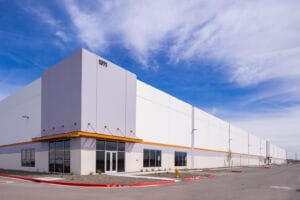In the modern city, change is the only constant. Economic shifts, evolving work patterns, and a growing emphasis on lifestyle over long-term commitments are transforming the way people think about where and how they live. This shift is especially visible in major rental hubs, with renting in London standing out as an example of how flexibility has become a key factor in attracting and retaining urban residents.
The shift in priorities
For generations, owning a home was considered the pinnacle of personal achievement. Yet in the past decade, that narrative has changed, especially among younger professionals and mobile workers. Instead of tying themselves to a single location, more city dwellers are seeking arrangements that can adapt to their changing needs.
Rising property prices in global cities, combined with the uncertainty of modern careers, have made long-term ownership less attainable and for some, less desirable. Renting offers an alternative that allows people to move for work, explore different neighborhoods, or take advantage of new opportunities without the financial and logistical burden of selling a home. In markets like London, San Francisco and Phoenix, renters now make up a significant portion of the population, not just in entry-level housing but across high-end and luxury segments as well.
LOCAL NEWS: 100 best places to work and live in Arizona for 2025
Technology as the enabler
Technology has been a catalyst in the rise of flexible living, particularly by making the search process faster and more transparent. Instead of spending weeks browsing fragmented listings across multiple websites or agencies, today’s renters can access a comprehensive view of the market in one place. Smart search filters and intuitive interfaces allow people to narrow down options based on budget, location, or property type in just a few clicks.
Property alerts have added another layer of convenience by notifying renters the moment a suitable home becomes available. This speed and efficiency has transformed the rental market, enabling international relocations and short-notice moves that would have been much harder in the past.
For landlords and property developers, this shift also offers benefits. By listing properties through digital platforms, they can reach a wider audience, fill vacancies more quickly, and respond to demand in real time.
The rise of co-living and shared spaces
One of the most visible signs of this shift toward flexibility is the growth of co-living. Once a niche concept, co-living now caters to a broad range of urban residents, from young professionals to mid-career relocators. These spaces offer furnished units, short-term contracts, and access to shared amenities such as gyms, lounges and coworking areas.
Co-living combines affordability with lifestyle perks, a particularly attractive mix for those who want to live in prime urban locations without committing to long leases or furnishing an apartment from scratch. In cities like London, New York and Austin, co-living operators are filling a gap in the market by providing turn-key solutions for people who value convenience and community over permanence.
Remote work and the location-independent lifestyle
The global rise of remote and hybrid work has accelerated the demand for flexible living arrangements. Professionals are no longer tied to offices in a single city, opening the door to “lifestyle moves”, relocating not for a job, but for quality of life. This has created a new kind of renter: one who values adaptability above all else.
Some choose to spend six months in one city before moving to another. Others may maintain a base in one location while spending extended periods elsewhere. Short-term rentals, flexible lease terms and furnished apartments make these patterns possible, and cities that embrace them are attracting a more dynamic, international population.
Flexibility as economic resilience
From an economic standpoint, flexible housing models make cities more resilient. During periods of economic uncertainty, people may need to downsize or move closer to job opportunities. Cities that offer diverse rental options, from short-term furnished studios to long-term family homes, can adapt more quickly to these shifts.
During the pandemic, for example, some urban centers experienced sudden drops in demand for centrally located apartments as remote workers moved to suburban or rural areas. Cities with adaptable housing markets were able to repurpose these spaces quickly, attracting temporary residents, students or new arrivals.
Challenges and considerations
Of course, flexibility is not without its challenges. Cities need to balance the demand for short-term rentals with the need for stable, long-term housing. Policymakers must consider how to regulate digital rental platforms to ensure they serve residents without driving up prices. Landlords and developers must invest in adaptable spaces that can transition between different types of tenants without losing profitability.
For tenants, the challenge lies in finding flexibility without sacrificing security. While month-to-month leases offer freedom, they can also come with higher rents or less predictability in renewals. Striking the right balance is key to making flexibility sustainable.
The road ahead
Urban living will continue to evolve in step with technology, work culture and global mobility. The growing preference for adaptable housing is not a passing trend but a long-term structural change in how people approach city life.
Developers who design versatile living spaces, landlords who offer diverse lease terms, and cities that embrace policy frameworks to support both residents and investors will be best positioned for the future. Ultimately, the most successful urban environments will be those that offer residents not just a place to live, but the freedom to shape their lives without being constrained by their address.
In the coming years, flexibility will not just define how we rent or own homes, it will shape the very identity of our cities. For the urban dwellers of tomorrow, the choice will not be about finding the perfect permanent home, but about finding the right home for right now, and knowing they can adapt when life changes.




